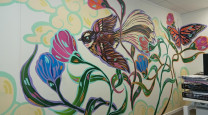
Meet the woman empowering communities through architecture and city making
16 May 2023
In the heart of Ōtautahi Christchurch, a dynamic force is working to empower citizens to take an active role in shaping the city they call home. We speak to the Director of Te Pūtahi Centre for Architecture and City Making, Jessica Halliday, a woman who has dedicated her career to fostering a sense of community ownership and belonging through inclusive city-making initiatives.
Tell us about your role and the different projects you oversee.
I'm the Director of Te Pūtahi Centre for Architecture and City Making - we're an independent not-for-profit organisation based in Ōtautahi Christchurch. We catalyse greater involvement in city making through a diverse and inclusive programme of engagement. Through events and festivals, we want to make it easy, desirable and fun for everybody to participate in the shaping and enjoyment of Ōtautahi Christchurch. We run the local and largest independent architecture festival - Open Christchurch - where we open around 50 buildings to the public over one weekend in May. Through the year we also run the speaker series ‘Christchurch Conversations’, we also offer neighbourhood walks and heritage events, and we're working on a new urban belonging project – there’s a whole range of activities keeping us busy.
What does a typical day look like for you?
We work from a dynamic co-working space in the central city called Saltworks - so a typical day involves a bike ride to the office, emails, meetings with the team, collaborators and Board members, active planning and oversight of our programme and hopefully a bit of dreaming and devising of new events or further development and refinement of existing ones. And there’s always financial work too - funding and sponsorship, financial management, reporting and measurement. There's always coffee. And it's a good day when I get to join in the Stuff quiz or cryptic crossword solving with fellow Saltworks residents. The bike ride home is important for digesting and reflecting on the day, and for more of that dreaming/refining - there's nothing like being part of city life on a bike - it's great for observation and intellectual and aesthetic stimulation.

Festival attendees explore Fonua Mana Tongan church (Bull & O'Sullivan Architects, 2021). Image by Peanut Productions.
What has your career path been like to get you to this role?
Unusual, I think. I've come from more an art and culture background than a strictly architecture one. I've got a PhD in Art History - specialising in architectural history. While at university I initiated and co-ordinated a series of talks on campus art and architecture - so public programming and engagement in architecture and the built environment has long been a particular passion. I ran the Ilam School of Fine Arts gallery for a couple of years, then moved to London and got a job at the hub of London's architectural life - the Architectural Association, where I was the graduate admissions co-ordinator. When I moved back from London in 2007, there wasn't a job I wanted in the country - so I started initiating my own work and getting funding for it - oral histories, an architectural exhibition, writing, speaking, making a film on architecture. Then the earthquakes hit - and everything changed. I had the opportunity to work with others on public engagement in architecture and urbanism - so I've been in this job since 2012 - when we established FESTA. It's been hard work, but it's incredibly rewarding.
What is it about architecture and design that interests you?
It's my life's passion. Architecture is the most public of the arts - and it is such an incredibly complex and important part of our culture. It provides shelter but it does so much more - it connects us to history, material culture, changing technologies and innovation, to social values and change, to politics and power - it can be aesthetically enriching, it determines a large part of how well we can live our lives - both personally, but also collectively - as families, communities, and in our civic lives.

Visitors get behind the fences of the Canterbury Provincial Council Buildings for the first time post quake (Benjamin Mountfort, 1858-65). Image by Peanut Productions.
Tell us about the architecture festival and where the idea came from.
I've been wanting to run a festival like Open Christchurch for nearly 20 years - ever since I attended Open House London while living there and doing research for my PhD. Open Christchurch is based on the Open House London model - that's the inspiration - but we put our own spin on it, considering our particular cultural context (giving expression to Te Tiriti is important to us) and thinking about local and national audiences. We want to celebrate architecture and "make it easy, desirable and fun" for people to engage with and learn more about the city and its people through architecture.
Do you have a favourite project you've seen featuring Resene in the past?
I have to name the work of Palace Electric - Ben Daly. He's taught me so much about the bold and sensitive use of colour and how much it can transform a space. I am a bit biased - he is my brother-in-law - but it means I know his work really well, as I've spent days or weeks staying in all of them. He's a master of colour. I love what he did on their Kawai project – those warm and rich tones.
Do you have a favourite Resene colour?
I have two – Resene Ciderhouse and Resene Zest. It's impossible to choose one favourite when you love colour!
Check out the Open Christchurch Programme: www.openchch.nz
Get in touch with Jessica: [email protected]
Main image: Te Pūtahi Director Jessica Halliday introduces the Saturday night event at Open Christchurch, 'Christchurch has style: The Legacy of Sir Miles Warren and Maurice Mahoney’. Image by Peanut Productions.
Published: 16 May 2023






